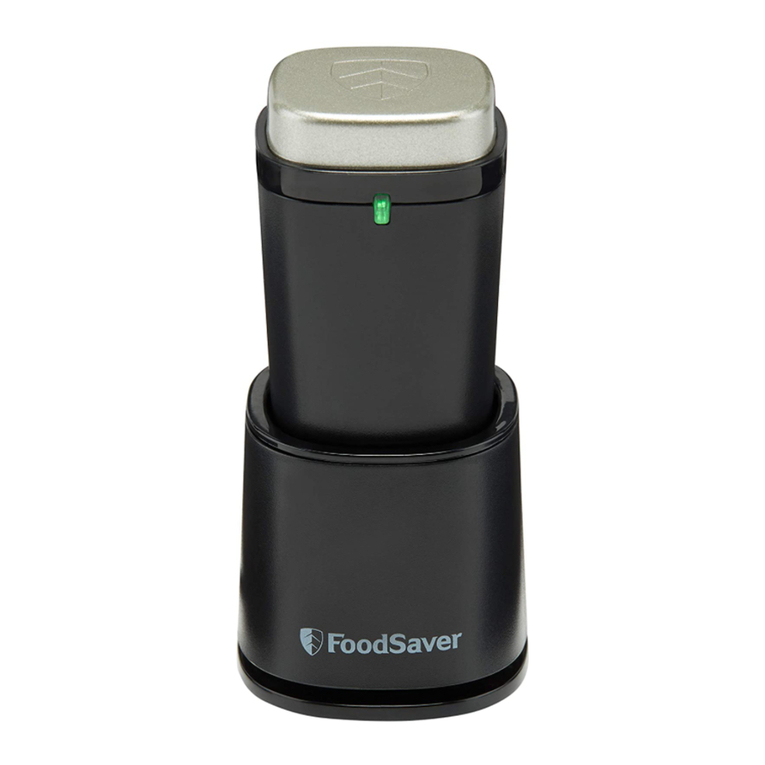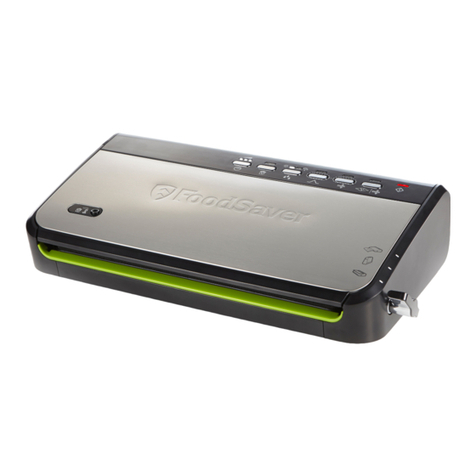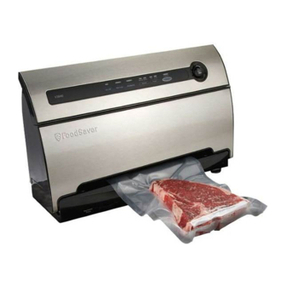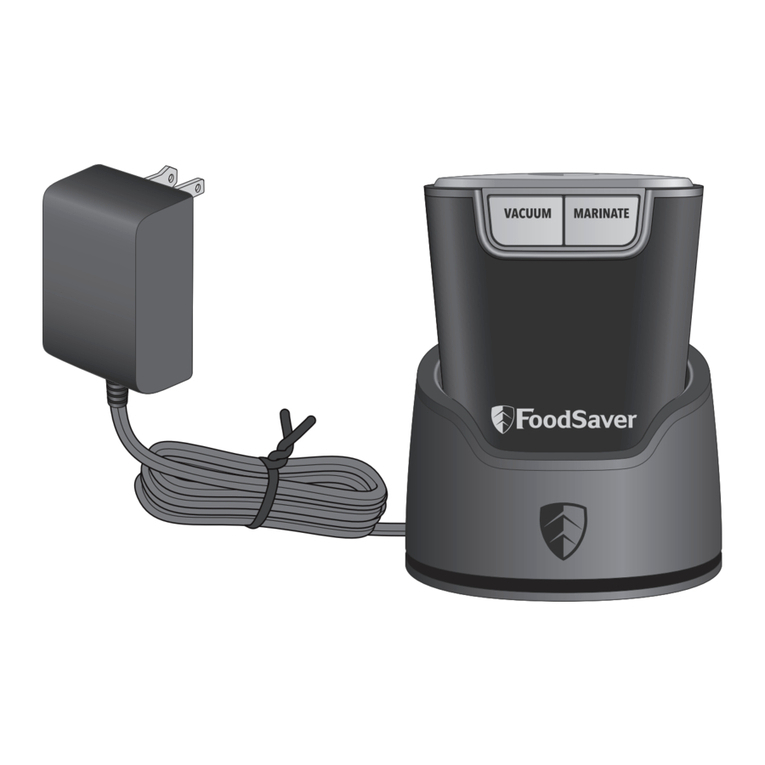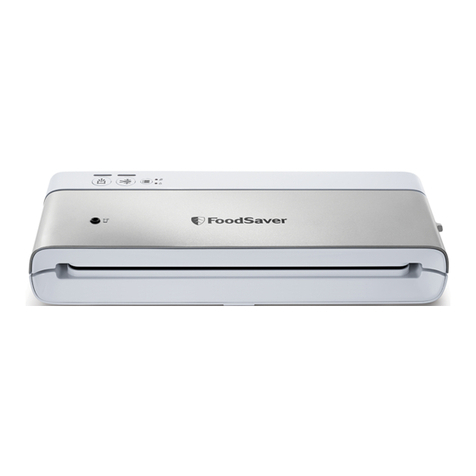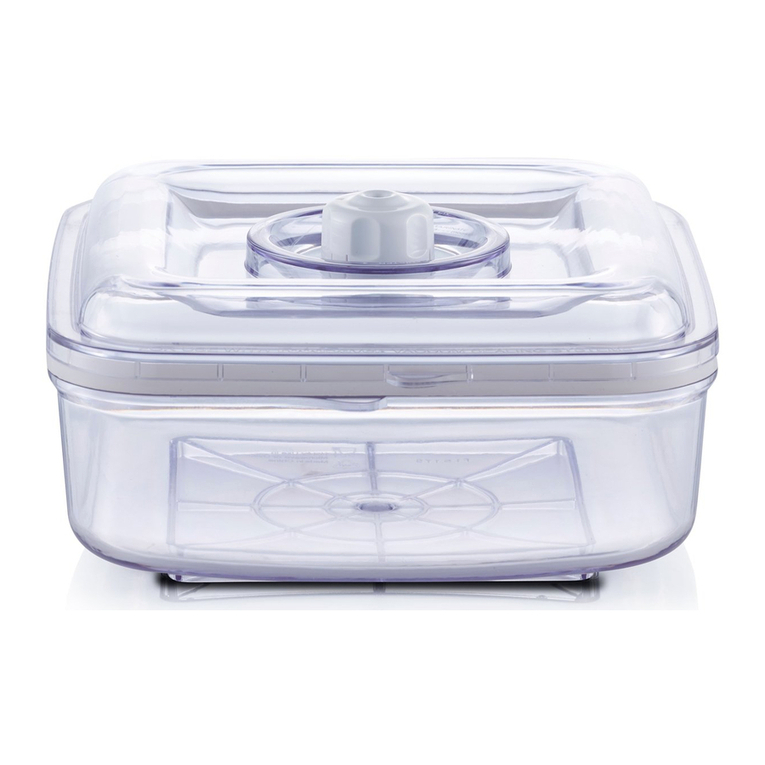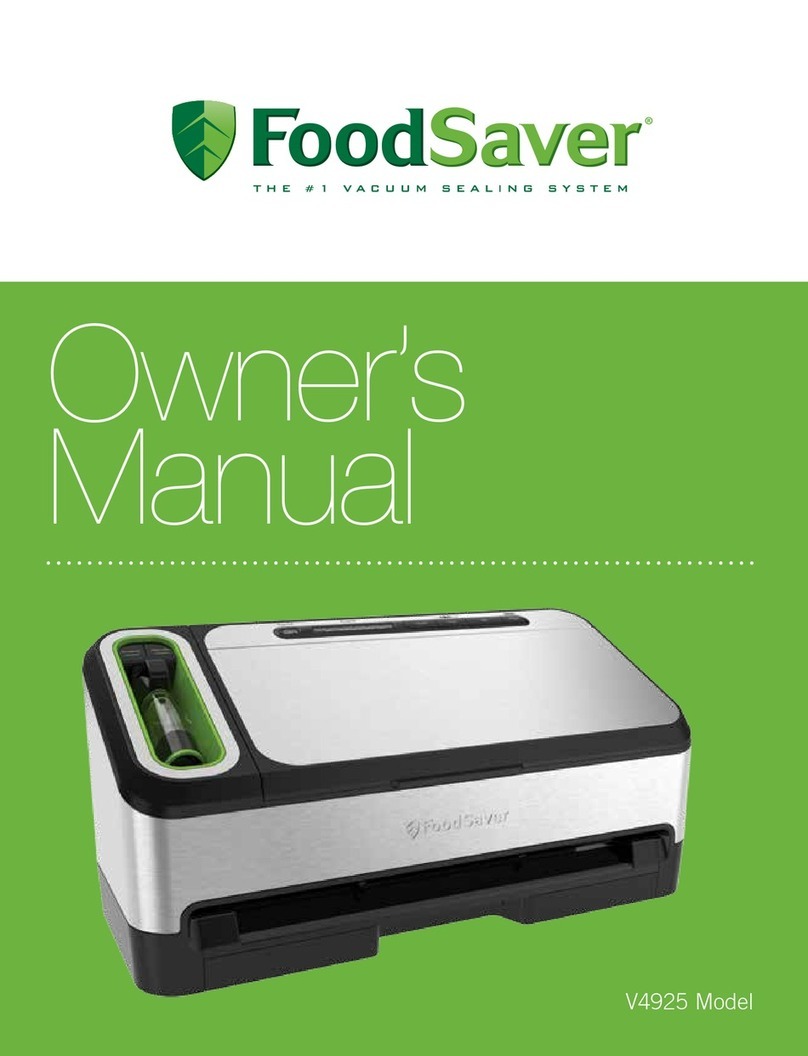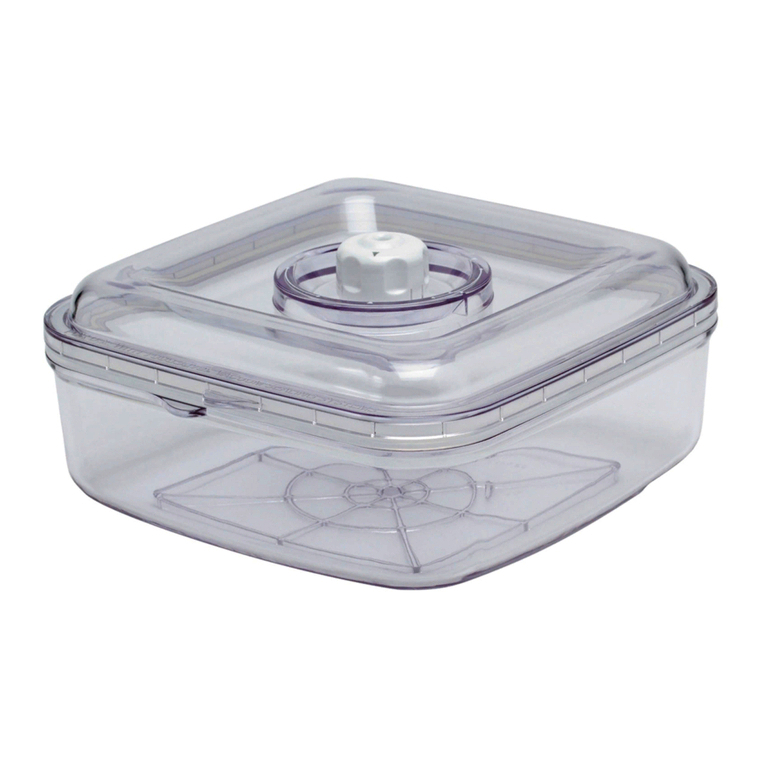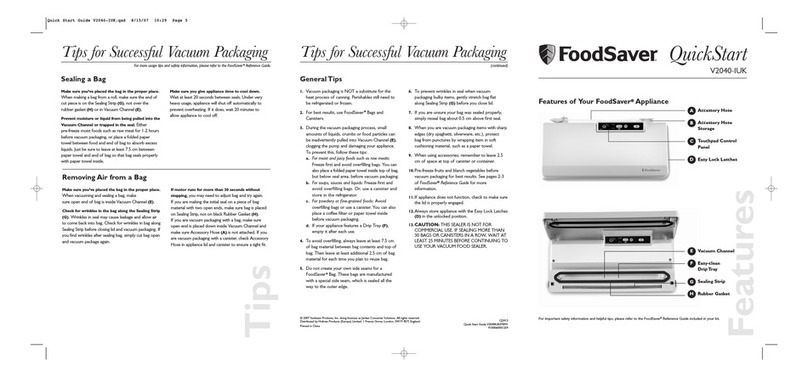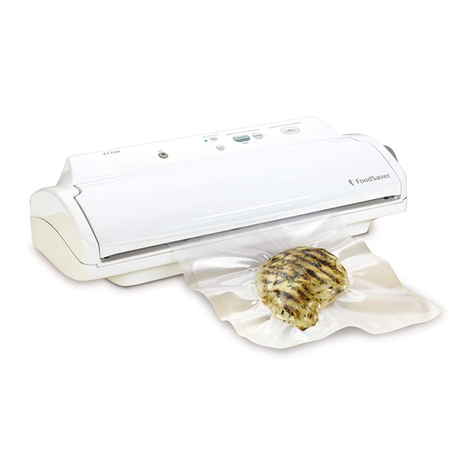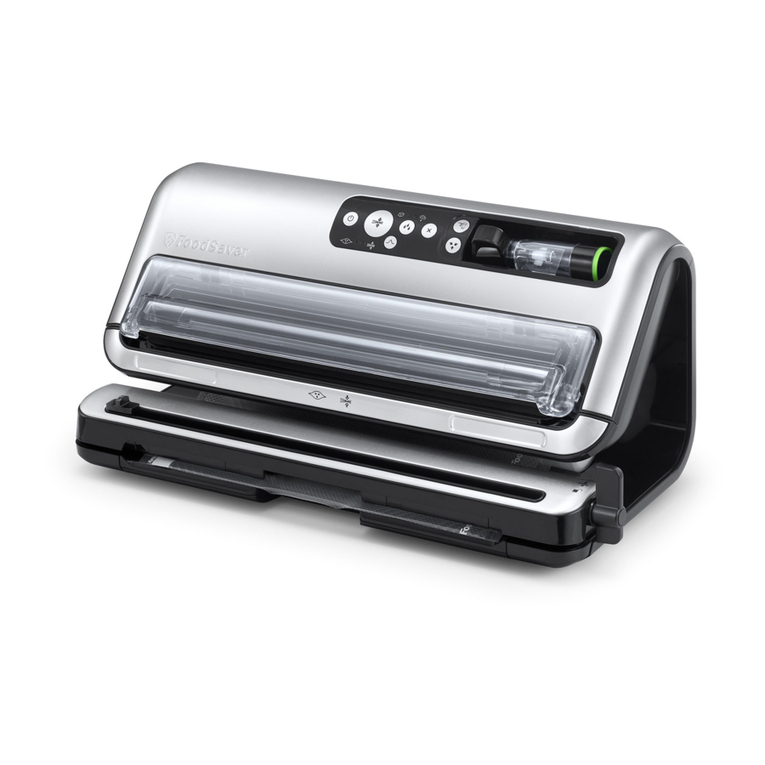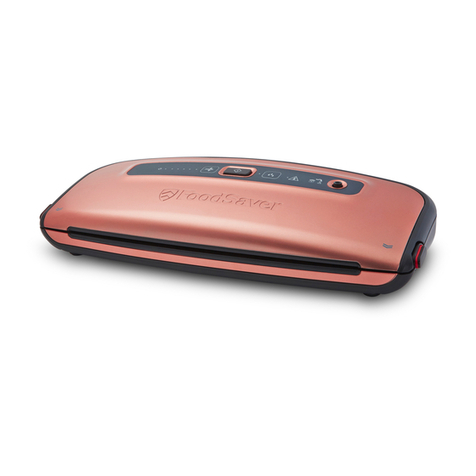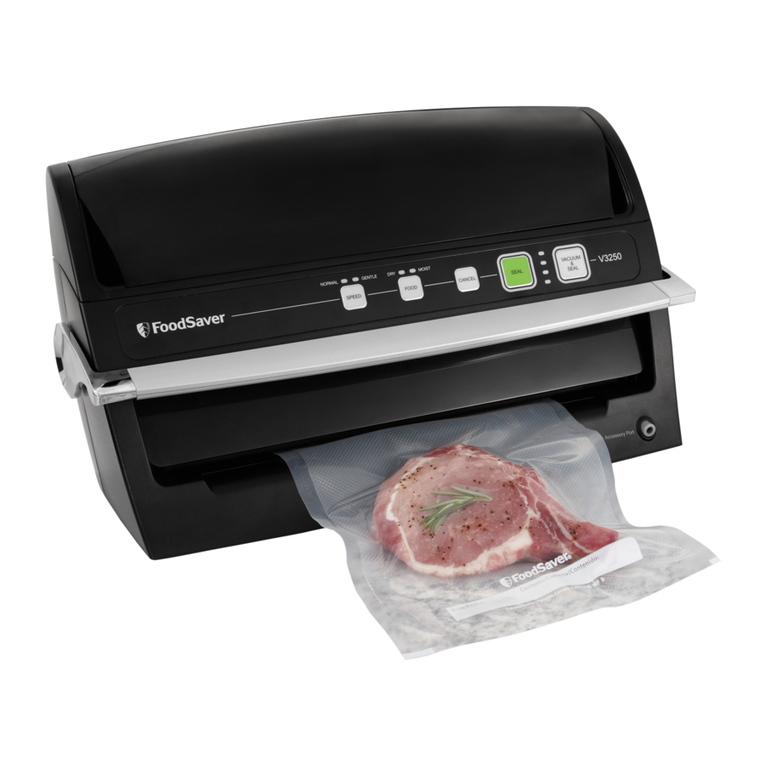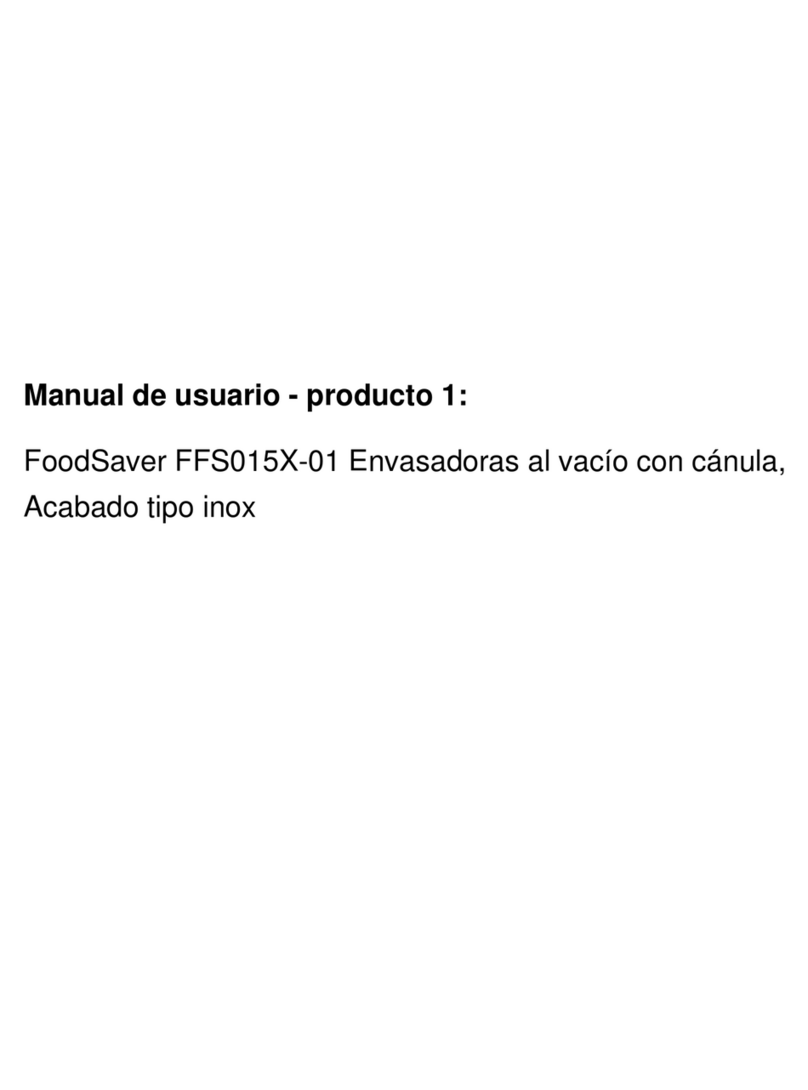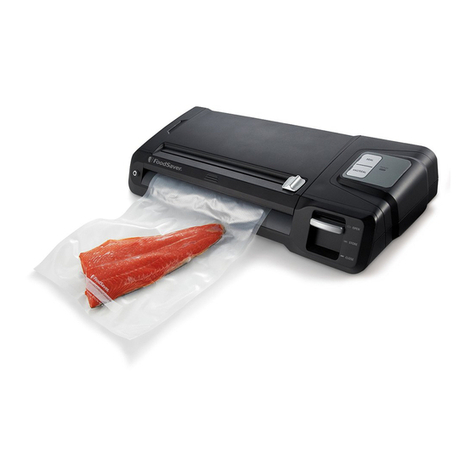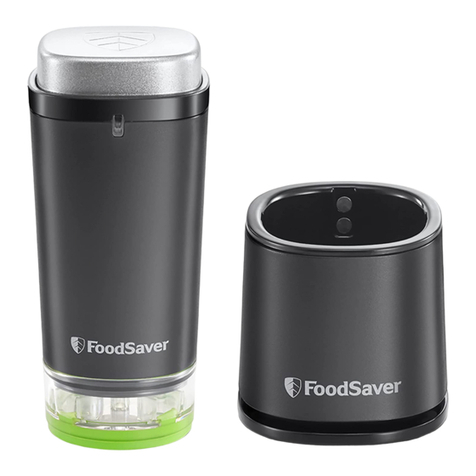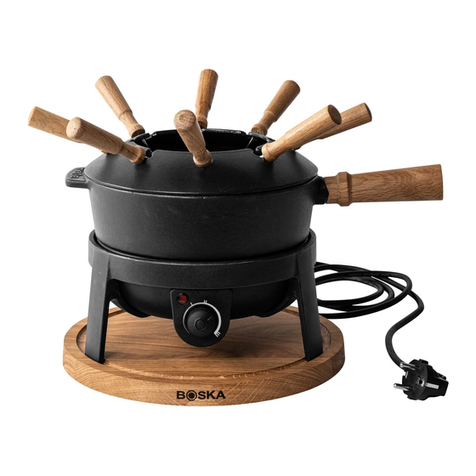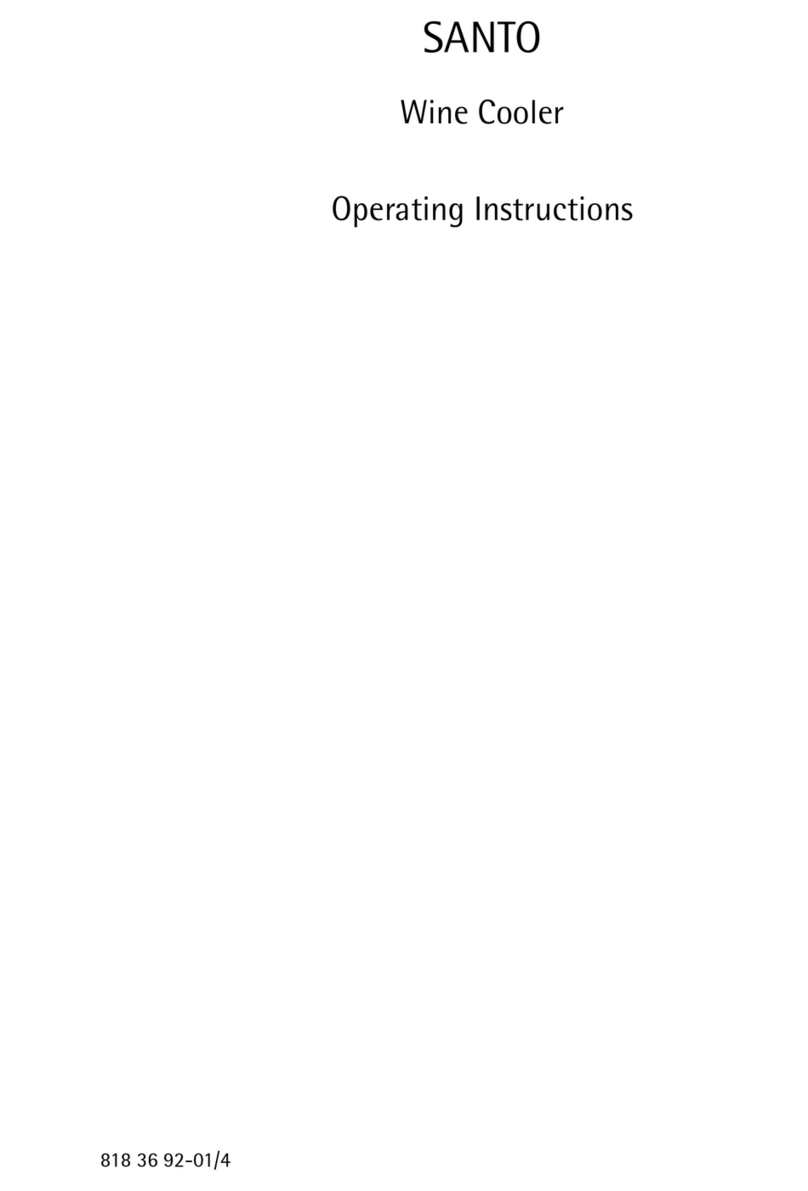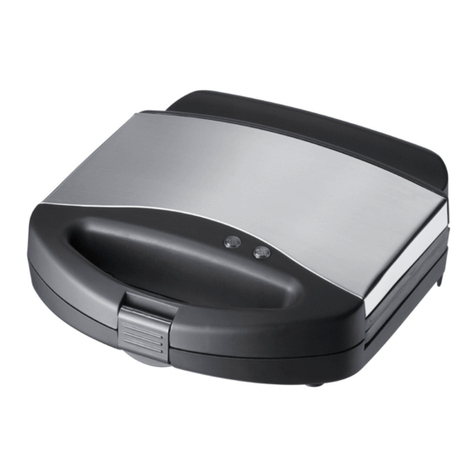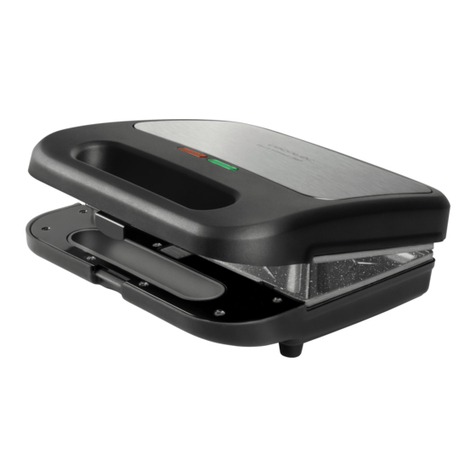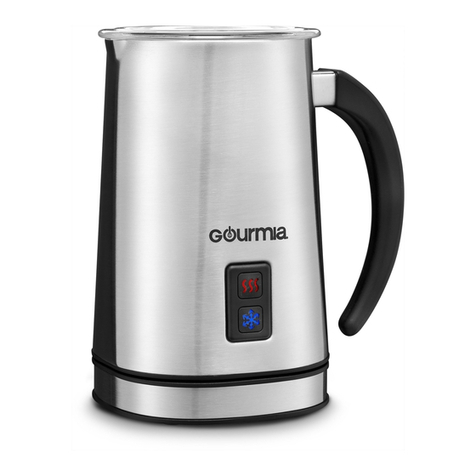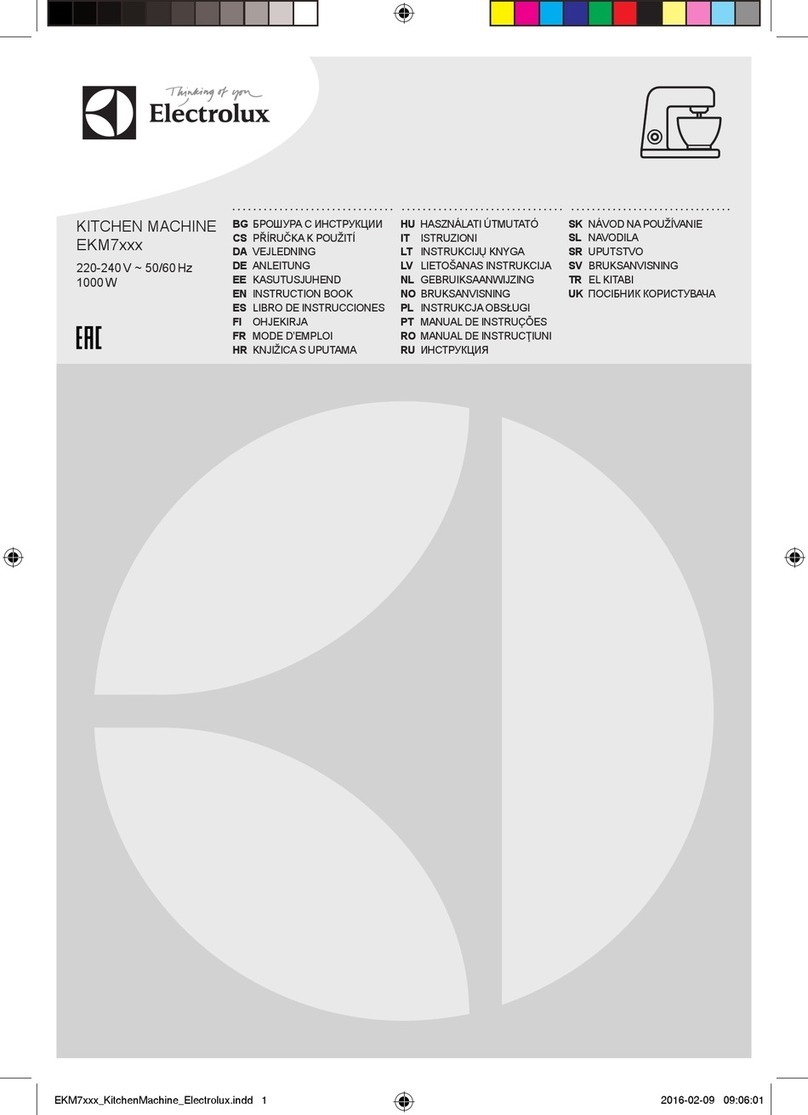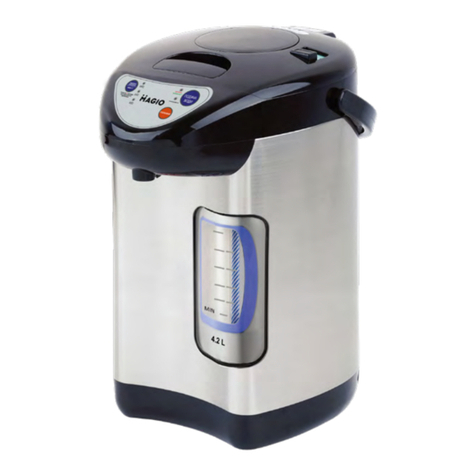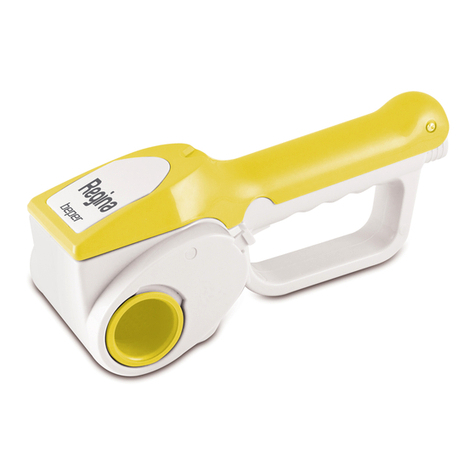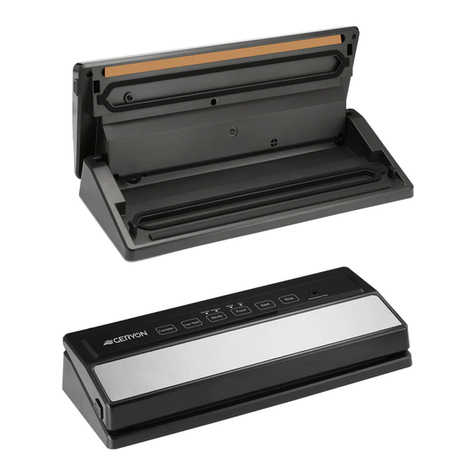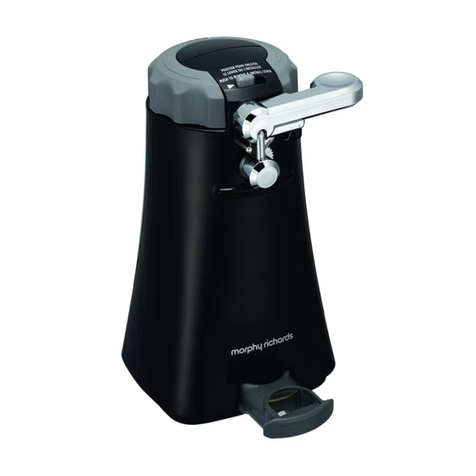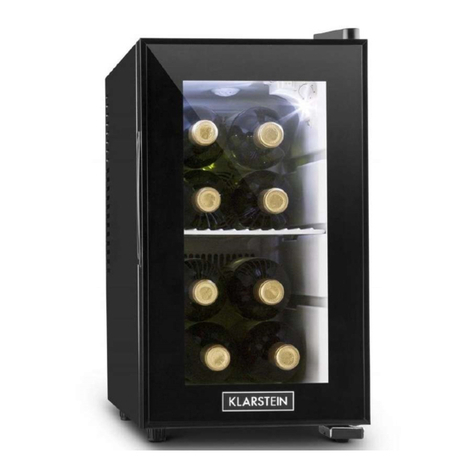How to Vacuum Package Using Your FoodSaver®Vacuum
Packaging Canister
NOTE: FoodSaver®Vacuum Packaging Canisters can only be used with
a FoodSaver®appliance that has an Accessory Port. Please check your
QuickStart Guide to see if your appliance has one.
1. Place your FoodSaver®appliance on a flat, dry surface and plug the power
cord into a standard electrical outlet.
2. Place the item(s) to be vacuum packaged inside the canister. Leave at least
one inch (1”) between the contents and the rim of the canister.
3. Wipe rim to ensure it is clean and dry.
4. Place the lid on top of the canister. If the canister has latches, put them
in an upright position so that the lid fits on the base. Push the latches
downward until they snap into place.
5. Insert one end of the Accessory Hose into the Accessory Port on your
FoodSaver®appliance.
6. Insert the other end of the Accessory Hose into the hole on the top of the
canister lid. Twist the gray tip of hose while inserting to ensure a tight fit.
7. Follow the steps for vacuum packaging as outlined in your QuickStart
Guide.
8. Remove the Accessory Hose from the Accessory Port on the appliance
before vacuum packaging in FoodSaver®Bags.
Allow hot foods to cool to room temperature before vacuum packaging. Otherwise, the
contents may bubble up out of the canister.
How to Open the FoodSaver®Vacuum Packaging Canister
To open, press and hold down the gray rubber button in the center of the lid
until you no longer hear air escaping. This will release the vacuum and allow you
to easily remove the lid.
Care and Cleaning Instructions
1. Wash all FoodSaver®accessories in warm water using a mild dishwashing
soap. Do not immerse lids in water.
2. Dry thoroughly before using.
3. FoodSaver®Vacuum Packaging Canister bases (but not the lids) are
top–rack dishwasher safe. Lids should be wiped down with a damp cloth.
4. FoodSaver®Vacuum Packaging Canisters should not be used in the
microwave or freezer.
Quick Marinator
Instructions For Use
Vacuum Packaging System
Vacuum Packaging and Food Safety
Vacuum packaging extends the life of foods by removing most of the air from sealed
containers, thereby reducing oxidation. Vacuum packaging helps preserve flavor and
overall quality. It also helps inhibit the growth of aerobic microorganisms, which can
lead to the problems noted below under certain conditions:
Mold – Easily identified by its fuzzy characteristic. Mold cannot grow in a low
oxygen environment, therefore vacuum packaging can virtually eliminate it.
Yeast – Results in fermentation, which can be identified by smell and taste. Yeast
needs water, sugar and a moderate temperature to grow. It can also survive
with or without air. Slowing the growth of yeast requires refrigeration, while
freezing stops it completely.
Bacteria – Right conditions, clostridium botulinum (the organism that causes
Botulism) can grow without air and cannot be detected by smell or taste.
Although it is extremely rare, it can be very dangerous.
As with any other storage container, it is important to inspect food for spoilage
prior to consuming.
To preserve foods safely, it is important to maintain low temperatures. You can
significantly reduce the growth of microorganisms at temperatures of 40°F (4°C) or
below. Freezing at 0°F (-17°C) does not kill microorganisms, but stops them from
growing. For long-term storage, always freeze perishable foods that have been vacuum
packaged.
It is important to note that vacuum packaging is not a substitute for canning and it
cannot reverse the deterioration of foods. It can only slow down changes in quality. It
is difficult to predict how long foods will retain their top-quality flavor, appearance or
texture because it depends on the age and the condition of the food on the day it was
vacuumed packaged.
NOTE: Vacuum packaging is NOT a substitute for refrigeration or freezing. Any
perishable foods that require refrigeration must still be refrigerated or frozen after
vacuum packaging.
Preparation Guidelines
Vegetables need to be blanched before vacuum packaging. This process stops the
enzyme action, which leads to loss of flavor, color and texture. To blanch vegetables,
place them in boiling water or in the microwave until they are cooked, but still crisp.
Blanching times range from 1 to 2 minutes for leafy greens and peas; 3 to 4 minutes
for snap peas, sliced zucchini or broccoli; 5 minutes for carrots; and 7 to 11 minutes
for corn on the cob. Then, immerse the vegetables in cold water to stop the cooking
process. Finally, dry the vegetables on a towel before vacuum packaging.
Cruciferous vegetables (broccoli, Brussels sprouts, cabbage, cauliflower, kale, turnips)
naturally emit gases during storage. Therefore, after blanching, they must be stored in
the freezer only.
IMPORTANT: Uncooked mushrooms, raw garlic and soft cheese should never be
vacuum packaged.
